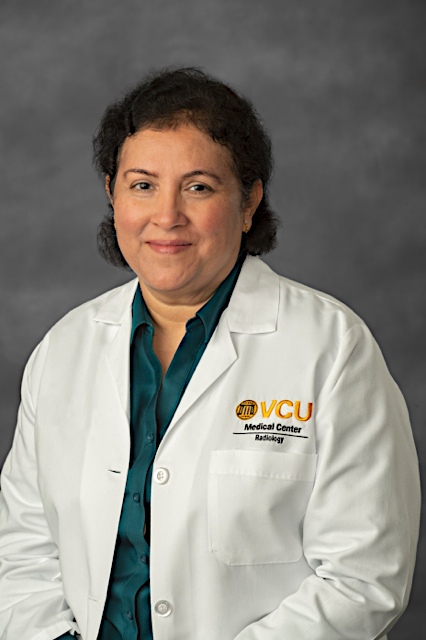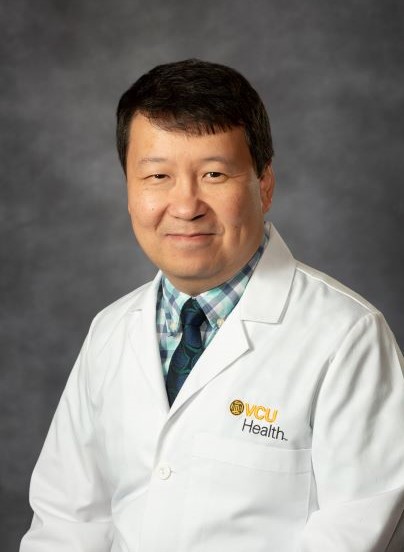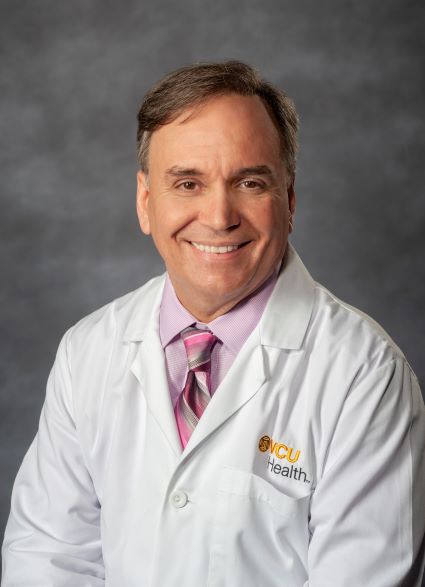Overview
Nuclear medicine is a subspecialty within the field of radiology. Specialty-trained radiologists use very small amounts of injected, ingested or inhaled radioactive materials to diagnose disease and other abnormalities. Unlike conventional diagnostic imaging, which uses an external source of energy, nuclear medicine radiologists introduce a radioactive material into the body. The radioactive material, called radiopharmaceuticals or radiotracers, are incorporated into a specific tissue or organ to be detected by an external scanning device or specialized camera. The images produced provide information on organ function and cellular activity.
There are several types of nuclear medicine scans, and the radioactive tracer may be injected into a vein, swallowed by mouth or inhaled as a gas, and eventually collects or is absorbed in the target area to be scanned. The radioactive tracer produces an energy signal that can be detected by a specialized camera or scanner, including the gamma camera, single-photon emission computed tomography scanner or positron emission tomography (PET) scanner.
Disease begins with microscopic cell changes. Nuclear medicine has the potential to identify disease in an earlier, more treatable stage, often before conventional imaging and other tests are able to reveal abnormalities.
Advanced Molecular Imaging
Nuclear medicine uses specialized isotopes to treat some tumors, to aide in the diagnosis of Alzheimer’s disease and certain mental disorders, and to assess treatment response of tumors.
Nuclear medicine scans are used to diagnose a wide variety of medical conditions and diseases, and include:
- Renal scans examine the kidneys to find abnormalities such as abnormal function or obstruction of renal blood flow.
- Positron emission tomography/computed tomography (PET/CT) scans to search for tumors or tumor spread.
- Thyroid scans evaluate thyroid function or better evaluate a thyroid nodule or mass.
- Bone scans evaluate any degenerative and/or arthritic changes in the joints, to find bone disease and tumors, and/or to determine the cause of bone pain or inflammation.
- Gallium scans diagnose active infectious and/or inflammatory diseases, tumors, and abscesses.
- Heart scans identify abnormal blood flow to the heart, determine the extent of damage to the heart muscle after a heart attack, and/or to measure heart function.
- Brain scans investigate problems within the brain and/or in the blood circulation to the brain.
- PET scans can also be used to assess for Alzheimer’s disease.
Some of the most common scans done by our nuclear medicine section, include:
- Bone Scan
- DaTscan Imaging
- First Pass Scan
- Gallium Imaging
- Gastrointestinal Bleeding Scan
- Hepatobiliary Iminodiacetic Acid Scan
- I-123 MIBG Imaging
- Liquid Gastric Emptying
- Liver/Spleen Scan
- Lung Ventilation-Perfusion Scan (VQ)
- Lymph Gland Imaging
- Meckel's Diverticulum Imaging
- Multigated Acquisition Scan (MUGA)
- Myocardial Perfusion Imaging
- Cisternogram
- Octreotide Imaging
- Parathyroid Imaging
- PET/CT Scan
- Prostascint Imaging
- Renal Function Scan
- Solid Gastric Emptying Scan
- Tagged White Blood Cell Imaging
- Thyroid Imaging
- Voiding Cystourethrogram
- Whole Gut Transit Imaging
Nuclear Medicine Safety
Because the doses of radiotracer are very small, diagnostic nuclear medicine procedures result in minimal radiation exposure. Nuclear medicine procedures have been performed for more than 50 years on adults and for more than 40 years on children of all ages without any known adverse effects.
The VCU Department of Radiology, nuclear medicine specialists use the newest imaging technologies and the “ALARA” principle (As Low As Reasonably Achievable) to select the amount of radiotracer needed to provide an accurate test with the least amount of radiation exposure to the patient.
Learn More About Our Safety OfficeNuclear Medicine Faculty

Jayashree Parekh, M.D., M.B.A.
Associate Professor

Jayashree Parekh, M.D., M.B.A.
Associate Professor
Radiology
Associate Professor
Chair, Division of Nuclear Medicine

J. Terry Lim, M.D., Ph.D.
Associate Professor


Jianqiao Luo, Ph.D.
Associate Professor

Jianqiao Luo, Ph.D.
Associate Professor
Radiology
Phone: (804) 828-1443
Fax: (804) 828-4181
Email: jianqiao.luo@vcuhealth.org
Address/Location:
Gateway Building, Second Floor

Robert L. Meredith, M.D.
Assistant Professor

Robert L. Meredith, M.D.
Assistant Professor
Radiology
Phone: (804) 827-4984
Fax: (804) 828-4181
Email: robert.meredith@vcuhealth.org
Address/Location:
Gateway Building, Second Floor